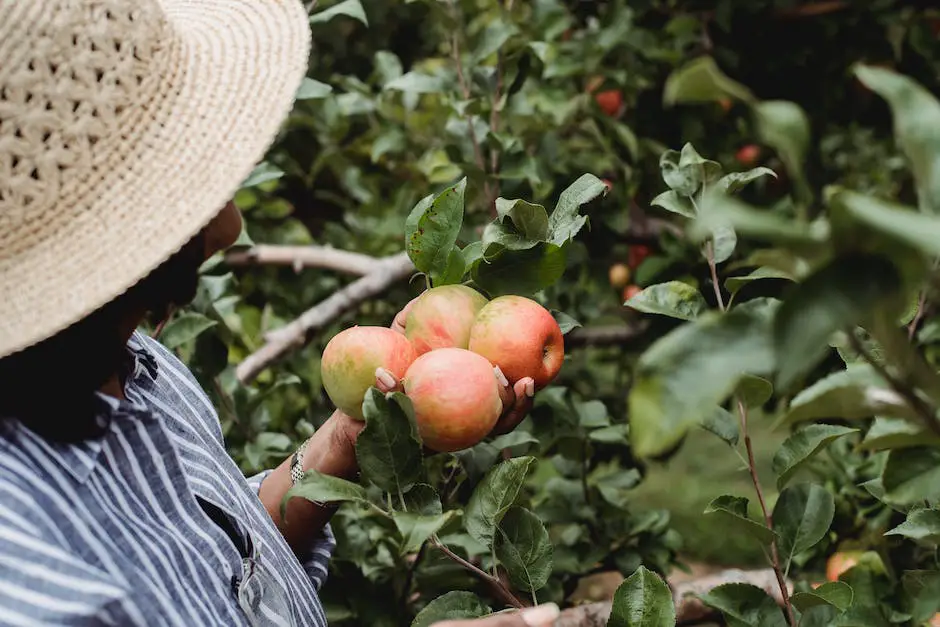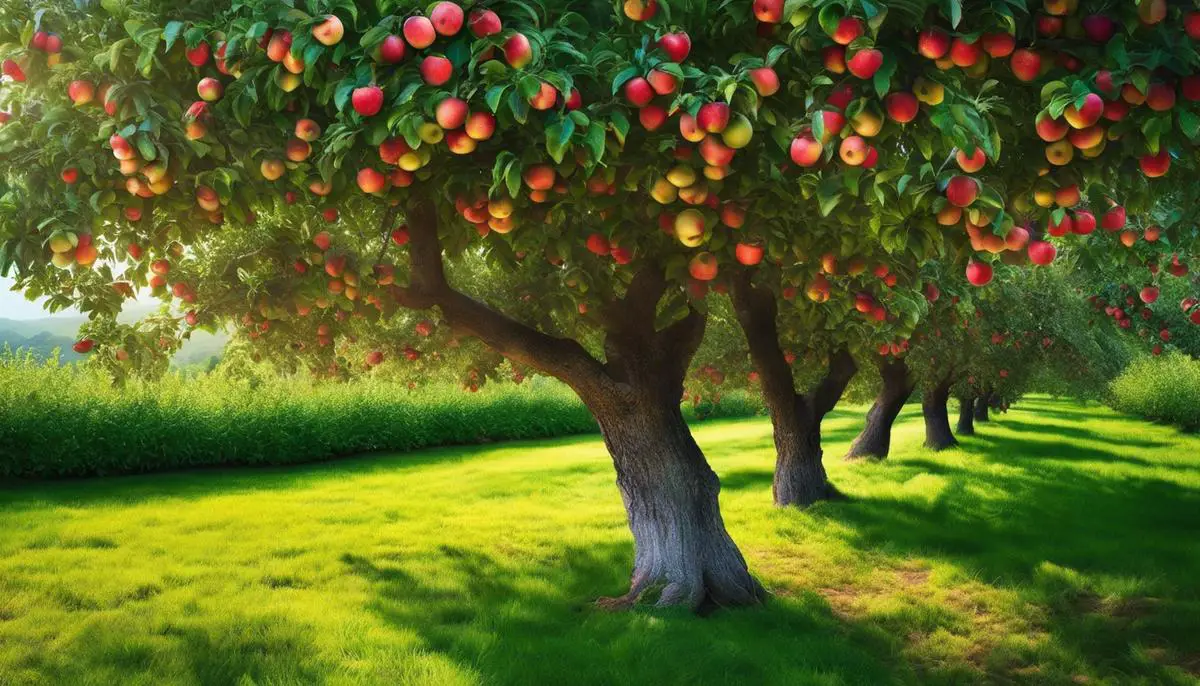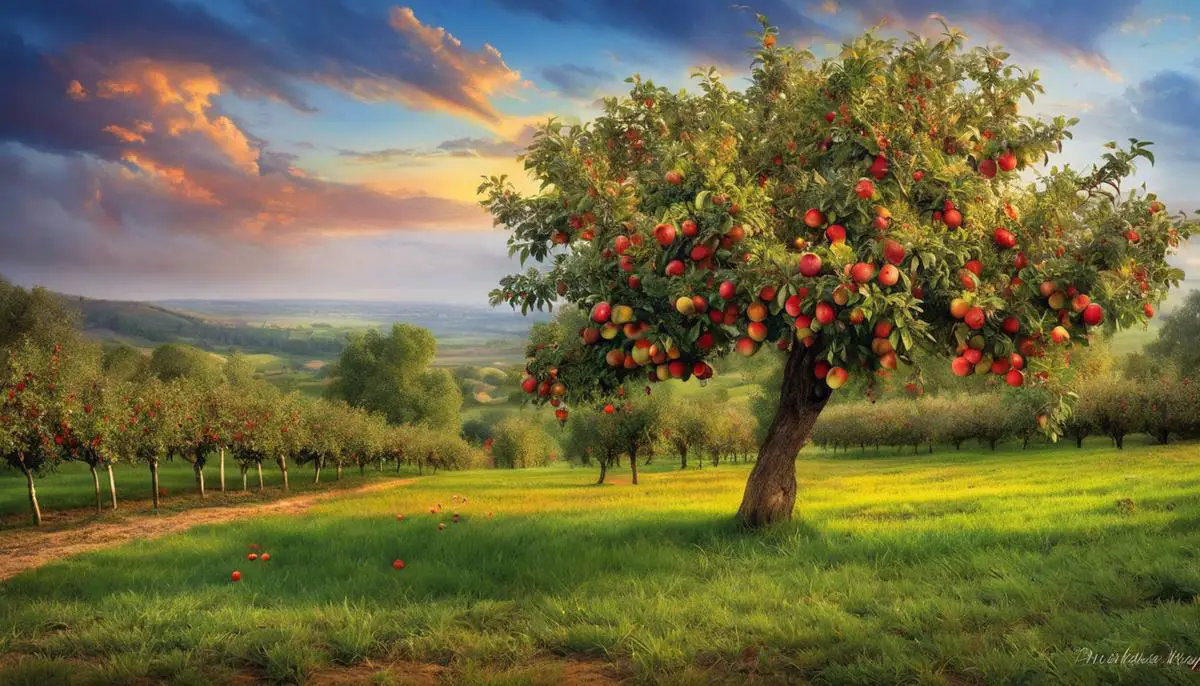There is something innately satisfying about plucking an apple from a tree in your own backyard. The crisp texture and refreshing taste are only enhanced by the knowledge you nurtured that tree from its inception. This joy, however, requires a comprehensive understanding of the necessities and conditions for growing a healthy and fruitful apple tree. From understanding the basic requirements like soil type, climate conditions, and sun exposure to comprehending the tree’s growth cycle, every aspect carries significant importance. We delve into the principles and techniques that need to be grasped for you to select the right apple tree variety considering its mature size, shape, fruit type, and disease resistance. All while enlightening you on the vital steps for planting and caring for your apple tree in order to ensure its prosperous growth.
Understand the Basics
Essentials of Growing Apple Trees: A Guide for Green Thumbs
Healthy, bountiful apple trees can be more than just background fixtures in an expansive backyard. They can be the beginning to a fruitful adventure — a hobby blossoming with sweet results. Brace up green thumbs, as gradual years of nurturing apple trees has unfolded an abundance of information on what it requires to grow the perfect apple tree.
The first fundamental requirement lies beneath the surface — yes, the soil. The importance of good soil can’t be overstated. Apple trees flourish in well-drained soil, ideally in loamy or sandy soil. Never underestimate the power of a soil test before planting. It can reveal the pH level and nutrients in your soil, enabling you to adjust it accordingly. Apple trees aspire to a slightly acidic soil at about 6.0 to 7.0 pH.
Location is as important as soil quality. Sunlight is tops on the list of location requirements. Apple trees should be planted where they can receive full sun, at least six hours a day. Those golden rays are critical for the tree’s photosynthesis process and overall growth. The location also needs to have good wind drainage. You wouldn’t want those budding trees to suffer due to cold winds, would you?
Next, comes choosing the right variety of apple tree. There are over 7,500 varieties in the world! The choice depends on your region’s climate and your personal preferences. Some apple trees don’t tolerate hot climates, while others have a hard time surviving cold winters. Do a little research and take local advice on the best apple varieties for your region.
Oh, and if you’ve been marveling at that lone apple tree in a spacious yard, note that most apple trees aren’t self-pollinating, meaning they need a different variety nearby to cross-pollinate and produce apples. If there isn’t enough space for two trees, there are some self-pollinating varieties available as well.
Every journey with apple trees begins with planting. Following the instructions on the nursery tag is a good way to go or the advice of a knowledgeable local nursery. Young apple trees, or “whips,” should be spaced at least 15 to 20 feet apart, and 12 to 15 feet apart for dwarf varieties.
Apple trees require regular watering, particularly in their early years before their root systems have fully developed. They should neither be allowed to dry out completely nor be waterlogged. Mulching around the trees can help retain the soil’s moisture.
Pruning is an unavoidable requirement for growing apple trees. It helps shape the tree, encourages better fruit production, and helps prevent diseases. Pruning should ideally be done during late winter or early spring.
With a little bit of patience, a dash of love, and a scoop of tender care, apple trees will reward you with bountiful apple harvests. It’s that simple. May your apple-growing journey bear the fruit of your effort!

Choosing the Right Apple Tree
Selecting the Perfect Apple Tree for Your Locale
One of the captivating aspects of apple-growing is that there’s a tree for just about every location. Whether you’re in a frost-prone zone or sunny California, successfully selecting the right apple tree for your area boils down to a handful of key considerations. So, step right up, and let’s explore tips for choosing that perfect apple tree attuned to your local requirements.
Firstly, understanding the hardiness zone in your area is crucial. The United States Department of Agriculture (USDA) has a Plant Hardiness Zone Map that provides invaluable guidance. This map divides North America into different zones based on an area’s lowest average temperature. Many nurseries tag apple trees with the zones where they will thrive best, which gives you a clear starting point for your tree hunt.
Next, consider the tree’s mature size. It’s essential to know how much room a tree will require once it’s fully grown. Dwarf apple trees, which can be as short as 10 feet, might be more suitable for smaller gardens, while semi-dwarf or standard apple trees, which can grow over 20 feet tall, would flourish in more generous spaces.
Following that, it’s pivotal to research the tree’s disease resistance. Apples are unfortunately susceptible to various diseases, with fireblight and apple scab being the most common. Factoring in disease resistance while selecting a tree is highly recommended, especially if you wish to reduce the use of chemicals on your tree.
Don’t forget to pay attention to the required chill hours for the apple tree. Chill hours represent the cumulative amount of time in winter where the temperature stays between 32°F and 45°F. Some apple varieties need this “chill” period to break down their bud dormancy and consequently bear fruit. Your selected variety should align with the average chill hours of your location for successful fruiting.
Last but not least, think about the ripening period of the apple variety you want to plant. Research when you can expect to harvest your apples. Varieties such as Yellow Delicious and Gala ripen early in the fall, while Granny Smith and Rome apples mature a bit later. Are you after a fresh burst in September, or do you prefer late autumn’s fruitful bounty?
Selecting an apple tree is more than just picking out a tree and putting it in the ground. It’s an adventure that considers your locale’s unique aspects, your garden space, and of course, your apple preference. It’s a rewarding journey poised with the promise of a vibrant, blossoming spring, and a crunchy, juicy harvest when fall rolls around. Happy planting!

Planting and Care
Learning the art of growing and caring for apple trees is a truly rewarding endeavor. It goes beyond just the joy of harvesting those juicy and delicious fruits right from the backyard. It is also about nurturing and watching a tree grow over the years, leading to a fruitful companionship. Now having covered initial steps like soil requirement, sunlight and wind drainage, choice of variety, pollination requirements, planting instructions, care routine including watering and mulching, and lastly, pruning tips, it’s time to dive deeper into this intriguing hobby. So, let’s explore some more advanced considerations to ensure that apple tree journey is a sweet success.
Every good apple tree cultivar needs to be aware of hardiness zones. USDA hardiness zones are a convenient means to identify the climatic zone and thus, the range of temperatures a tree can endure. Make sure to check the hardiness zone for the selected apple tree variety to ensure it is compatible with the local weather conditions.
A crucial factor to consider when planting an apple tree is its mature size. Be sure to allocate a location that can accommodate a potentially large and spreading tree, ensuring that it won’t impinge on structures or encroach neighboring gardens.
Disease resistance should be a part of the research process while selecting a variety. Nothing can shatter the dreams of a bountiful harvest quicker than a tree succumbing to disease. It’s best to choose disease-resistant varieties, as they are bred to resist common apple tree diseases, making them easier to care for, especially for beginners.
Chill hours, the number of hours below 45°F in the winter, are another topic worth illuminating. Some apple trees require a specific number of chill hours to produce fruit. Do remember to cull out information about the required chill hours for the tree you have selected and compare it to the average chill hours in your area before planting.
Lastly, contemplate on the ripening period of the variety of apple. Would you like to harvest in early summer or prefer one that yields creamy apples in early fall? Keep in mind that the time taken for an apple to ripen can vary from variety to variety, and this should align with your apple eating preferences.
Discipline and determination are key in the apple cultivation journey. All the learning and effort in understanding the variables of planting and caring for apple trees will be a handful at first. Still, with time, much like the apple tree itself, knowledge and skills will mature and grow, yielding delightful results. Remember, it all stems from first planting that little sapling. So, get those gardening gloves ready, and embark on this fulfilling journey of growing apple trees. Your future self (and apple pies) will thank you for it. Enjoy the fruits of your labor and savor each crunch, because every apple contains the love and care you poured into that tree!

There is no denying the challenges you might face in your apple tree growing journey, but with the fundamentals covered, you can confidently choose and grow a productive specimen. The fruit of your labor, from the selection of your preferred tree variety through to planting and diligently caring for it, will be the reward of bountiful apple harvests. Reflecting on these aspects not only equips you with the technical understanding but also fills you with the passion necessary to cultivate these iconic trees. Remember, your love and dedication for your apple tree is just as crucial as soil prep or sun exposure, because an apple tree nurtured with care always bears the sweetest fruit.